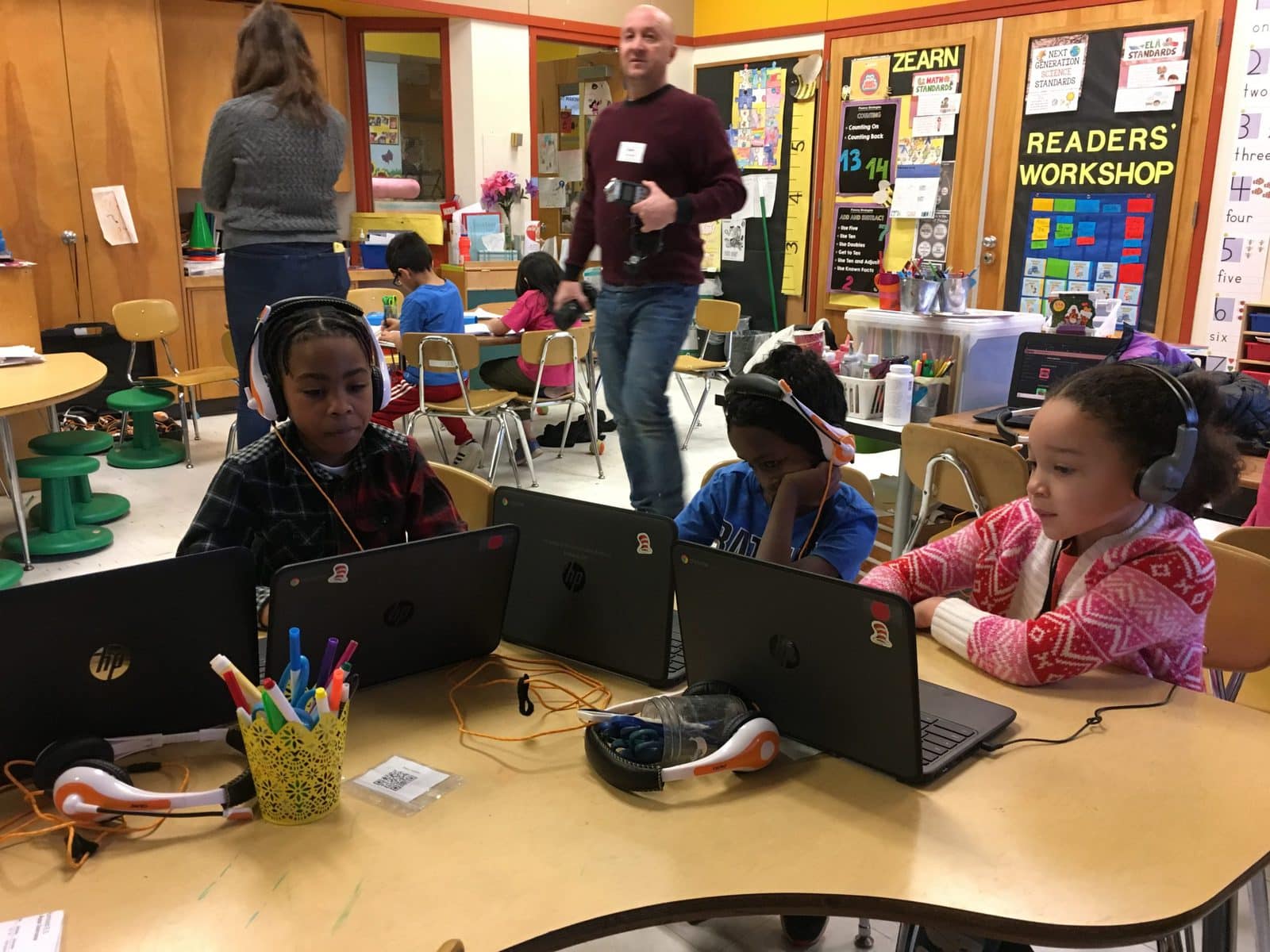This blog post was authored by Zoe Schacter-Brodie, a member of the Tivnu 5 cohort from Menlo Park, California. She interns at Boise Eliot Elementary School and Outside the Frame.

The Friday night before Martin Luther King Day, Tivnu attended a Shabbat service at Congregation Beth Israel with a special lecture given by Bryan Stevenson, acclaimed author, orator, and founder of the Equal Justice Initiative. Stevenson discussed his decades-long involvement as a lawyer and activist in the fight against America’s corrupt and racially unbalanced justice system, and emphasized the importance of getting proximate as a means of effecting change. This lesson, learned through his work with incarcerated people of color, drives Stevenson to get “uncomfortably” close to problems in order to more effectively empower marginalized people. As he asserted, “there is power in proximity.”
Stevenson’s words were deeply impactful. As he detailed his experiences as an advocate for incarcerated people, I began to reflect on the ways that proximity had impacted my experience in Tivnu thus far, and how I could hold space for this value of “getting proximate” as I continued.
My name is Zoe. I’m nearly five months into my gap year with Tivnu, a period of time I’ve spent in a new level of proximity to a number of things–a cohort of other teens, deep injustices (specifically those with roots in the glaring inequality of our education system), and myself. The idea of proximity as a central tenet of change was one that I was aware of and knew would be key to my experience with Tivnu, although I wouldn’t have articulated it with that language before hearing Stevenson speak.

I could spend hours delving into all of the ways that Tivnu fosters this proximity, but I’ll focus on the one that stands out most for me: my internship at a primarily low-income elementary school, and all that it’s taught me about the causes and effects of an educational system laden with injustice.
Four days a week, I work as a teacher’s assistant at Boise-Eliot/Humboldt School–Boise for short. Boise is a Title I school, meaning that a high percentage of students qualify for free or reduced lunch, and the school consequently receives a sum of money from the government to help students thrive. The low-income status of much of the school’s population is accompanied by inherent needs, whether they be financial, educational, or emotional. While there’s no shortage of statistics floating around about Title I schools and general educational inequality, the gravity of these issues was hard for me to access without contextualizing them through first-hand exposure and–at risk of using this word so much that it loses its meaning–proximity.

I work with first graders. The students are too young to know the words for the insidious systems working against them, but they still experience their effects. The factors that disadvantage students from low-income backgrounds are widespread and overwhelming, and manifest in ways I didn’t expect.
Several months ago, near the beginning of my time at Boise, I took one reluctant student into another room to administer a math assessment. When I asked if she was ready to begin, she hesitated for a moment before beginning to cry. When she was ready to talk, she confided in me, revealing a hard moment from home that was making it challenging for her to focus on schoolwork. After we talked about it for several minutes, she was able to complete the assessment, though she remained subdued and unfocused for the rest of the day. Many of my students are often similarly impacted by external circumstances. I reflect on that moment constantly–the frustration I felt when she pouted on her way into the room and refused to even write her name on the paper; the misplaced reprimand rising in my throat before she began to cry; the overwhelming realization that I truly have no idea what goes on beyond the classroom. The root of students’ misbehavior or struggle to focus and learn, for instance, rarely stems from a simple lack of caring, or inability to succeed. Children are products of their surroundings, and react to their circumstances–turbulent home lives, lack of resources at home, general instability. As Bryan Stevenson said, “proximity has taught me some basic and humbling truths.”

Had I bypassed this proximate experience and pursued a career in education reform like I once planned, I wouldn’t have these frames of reference to look back on. I wouldn’t understand the weight of the different situations students face on a daily basis, nor the various systems undermining these students’ progress. More importantly, I would lack the unique motivation that I feel to effect change in the realm of education. For me, the phrase “educational inequality” is no longer just a pair of words tied to some bleak statistics and vague knowledge. It’s a call to action, a driving force, memories of the lively and chaotic community within the brick walls of Boise-Eliot.
“Hopelessness is the enemy of justice,” Stevenson claims. There’s a persistent need inside me to make things better for my students and for all children like them, but this need isn’t driven by despair or anger. I saw a problem, and Tivnu helped me get proximate. I am filled with frustration, but more than that I am filled with hope. There’s hope in the faces of my students, in their art they made for me taped to my bedroom wall, in the sounds of their laughter on the playground, in the spark in their eyes every time a new concept clicks.
Proximity is a powerful thing. There’s hope here.
Follow Us
Sign Up For Updates
Taking a gap year in the US can be as meaningful as doing one abroad.
 Featured in The New York Times
Featured in The New York Times